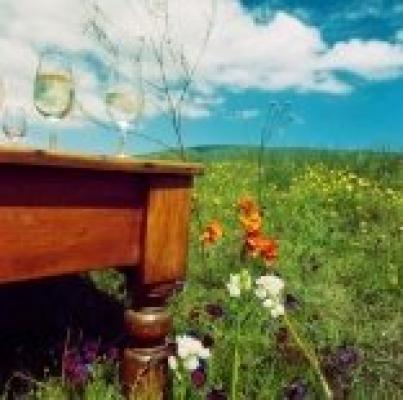Groenkloof, the name of the area in which Darling is situated, dates back to 1682 when standard bearer Oloff Bergh, pioneer explorer, undertook a journey to the north through the heavy sands of the West Coast. Darling, named after Charles Henry Darling who came to the Cape as Lt Governor in 1851, was founded on the farm Langfontein in1853.
Many of the historic farm names and homesteads still exist and the signal cannon that now has pride of place in front of the Municipal Building, was erected on Klipberg in 1734 to warn burghers of impending danger.
The farming community of Darling concentrates on the production of grain (the district is known for its very high yields), grapes, potatoes, peas and also dairy farming. It is here in Darling, where due to a shipping error, the first Merino sheep grazed and bred. Wool production in S. A. had its origins here.
The Darling museum was established to preserve the butter-making industry of Darling. Visitors can browse around the various sections which contain clothing, furniture and utensils of a bygone era, complete with an old classroom, a kitchen, a sitting room and an agricultural section. The butter museum covers an entire section, detailing the beginning of butter making, the history of Darling Creamery.
Wild flowers
Darling is a wild flower gem - in summer the yellow wheat-fields, autumn the rust colour of the vineyards, in winter the rich green hills, the birth of the arum lillies, and then spring - the immense beauty of the wild flowers.
Darling Wild Flower Society holds its wild flower show in the third week of September each year, weather permitting. Since 1917 the Wild Flower Show has been held annually. Come and experience tractor rides to a wild field, traditional meals, flea market stalls, +- 300 specimens of wild flowers on show.
Duckitt nurseries
The farm Oudepost houses the largest orchid nursery in the Southern Hemisphere and is situated on the R307 about 3km from Darling. The annual orchid show takes place in the third week of September to coincide with the Wild Flower Show.
Mamre route R307
Mamre Mission Station was established in 1808 by the German Moravian Society. The missionaries built a church, school and watermill, which is now a museum.
Lime kilns
The lime kilns which are situated on the road to Yzerfontein, were used to burn shells for making lime. Yzerfontein has a fishing harbour. Whales can be seen frolicking in the bay.
Hildebrand monument
The Memorial to Field Cornet C.P. Hildebrand of the Boer Forces' Maritz Commando. Darling was the most southerly village to which a Boer commando penetrated during the Anglo-Boer war. (1899 - 1902).
Darling Tourist Bureau
Tel: 022 492 3361
Fax: 022 492 2935
Email: info@darlingtourism.co.za
Pastorie Street, Darling, 7345




